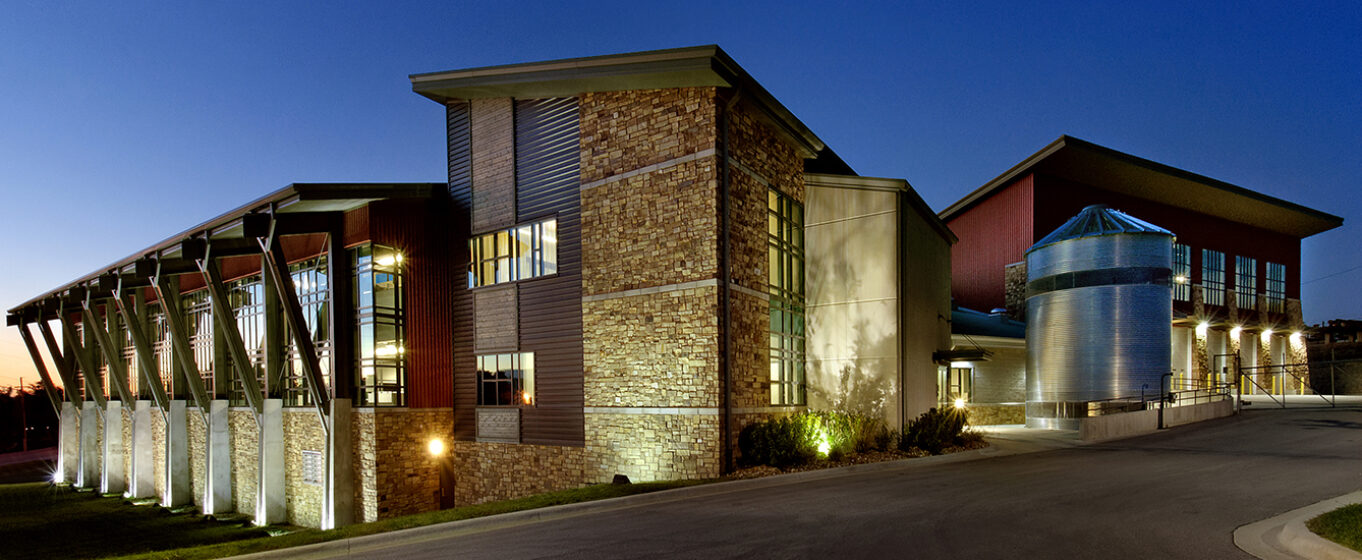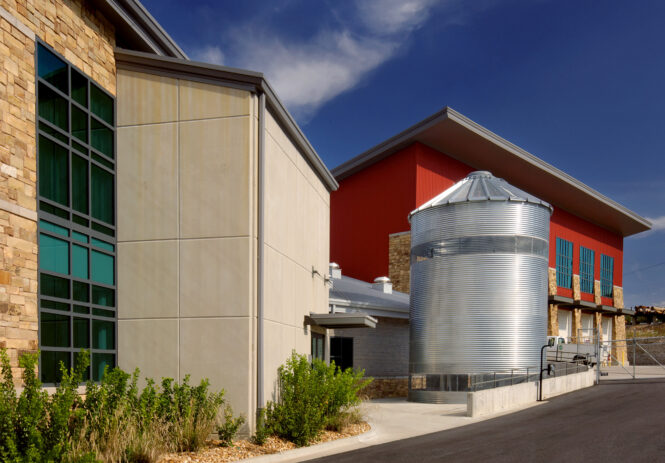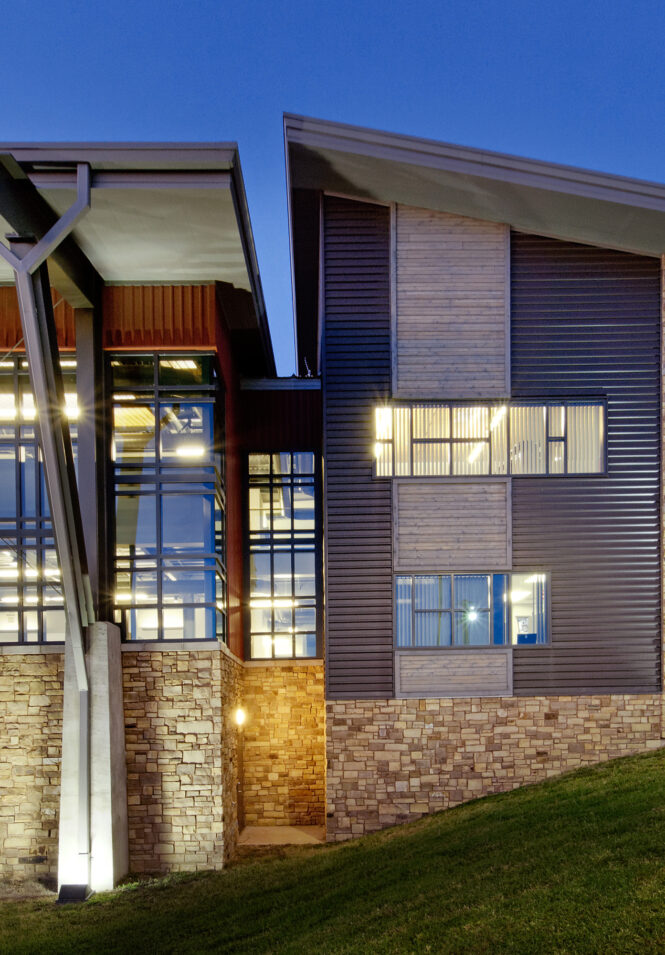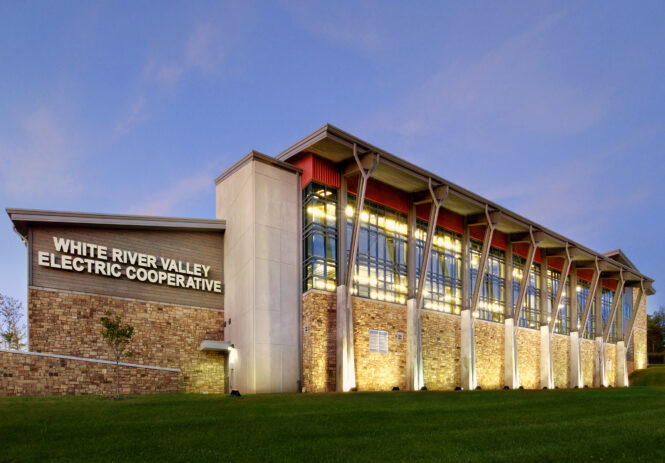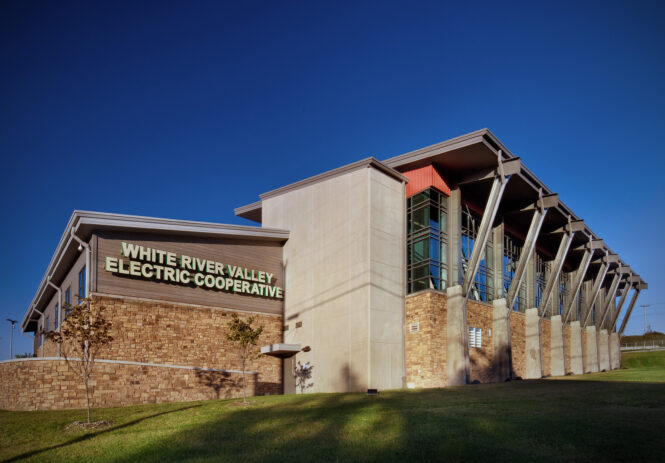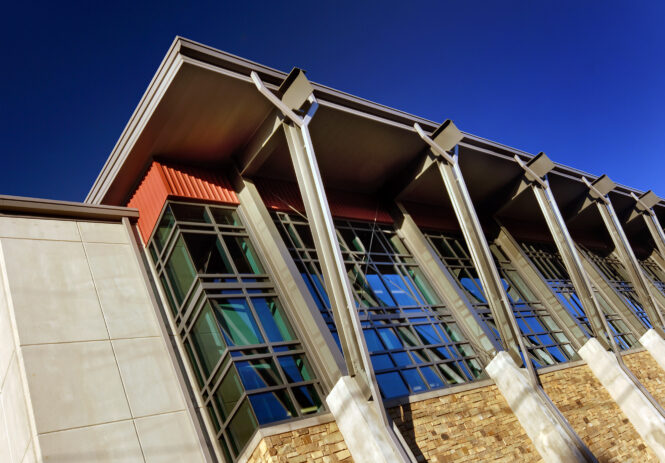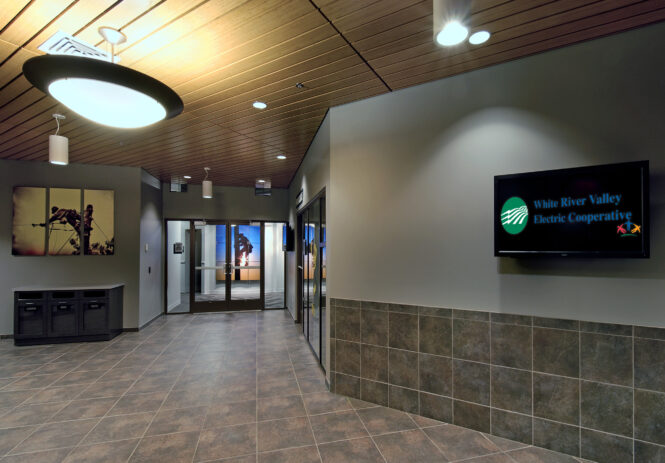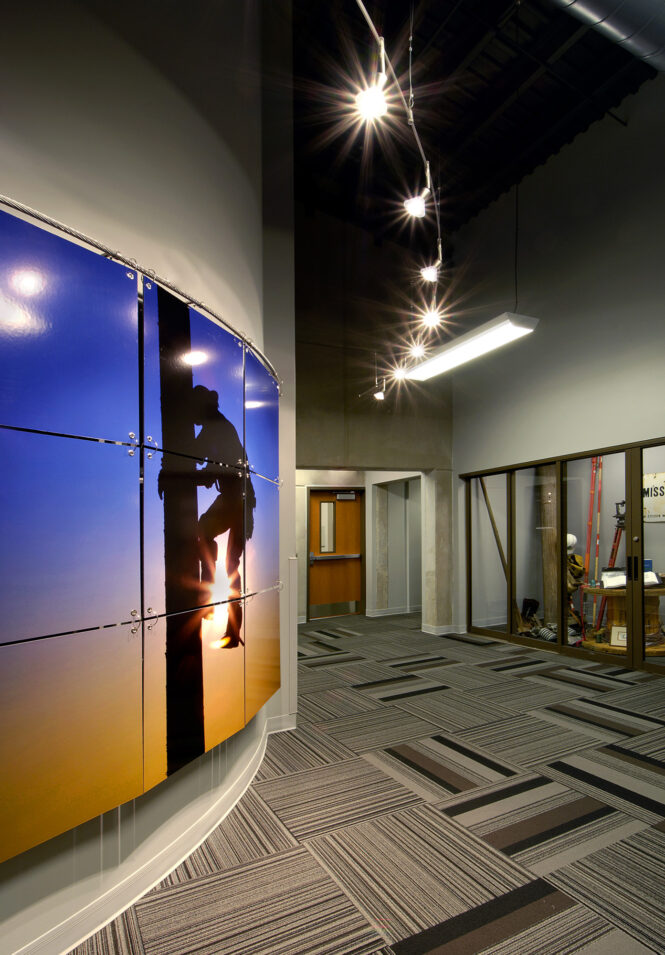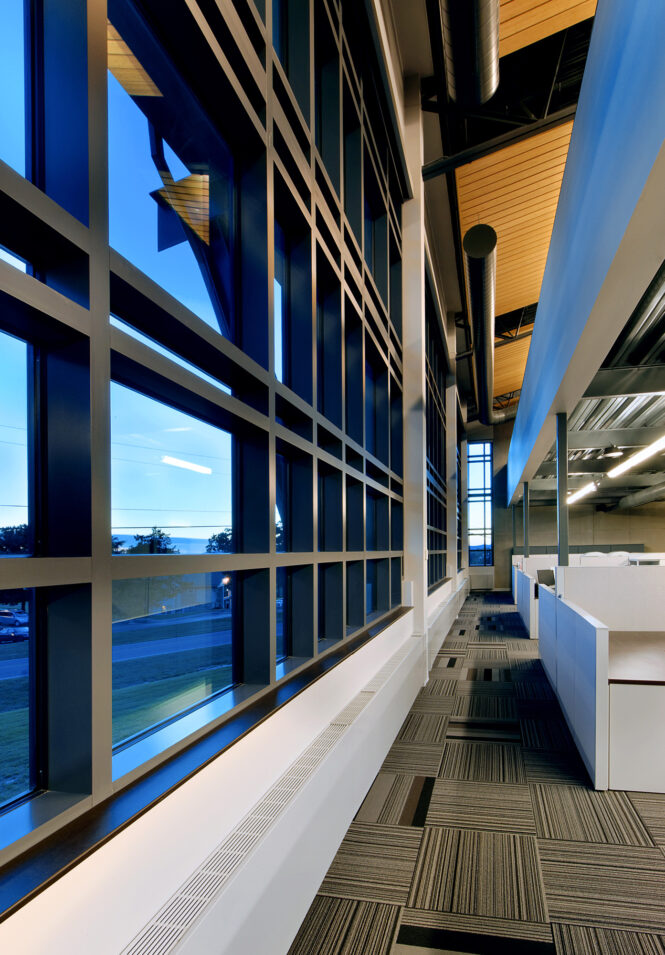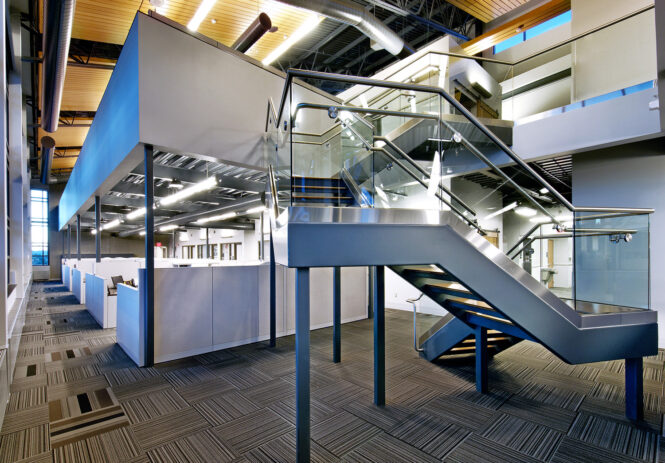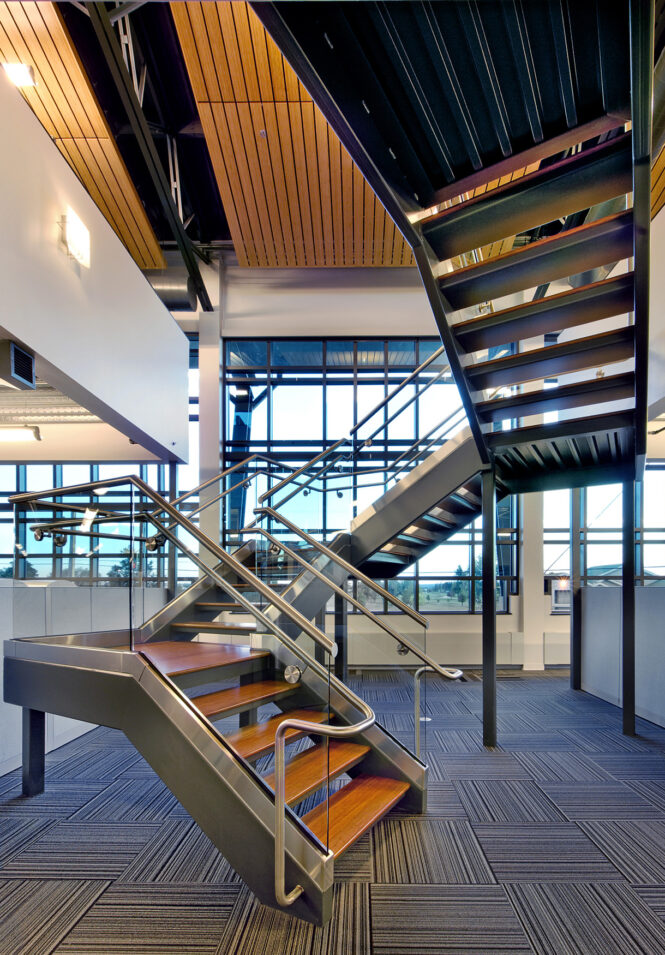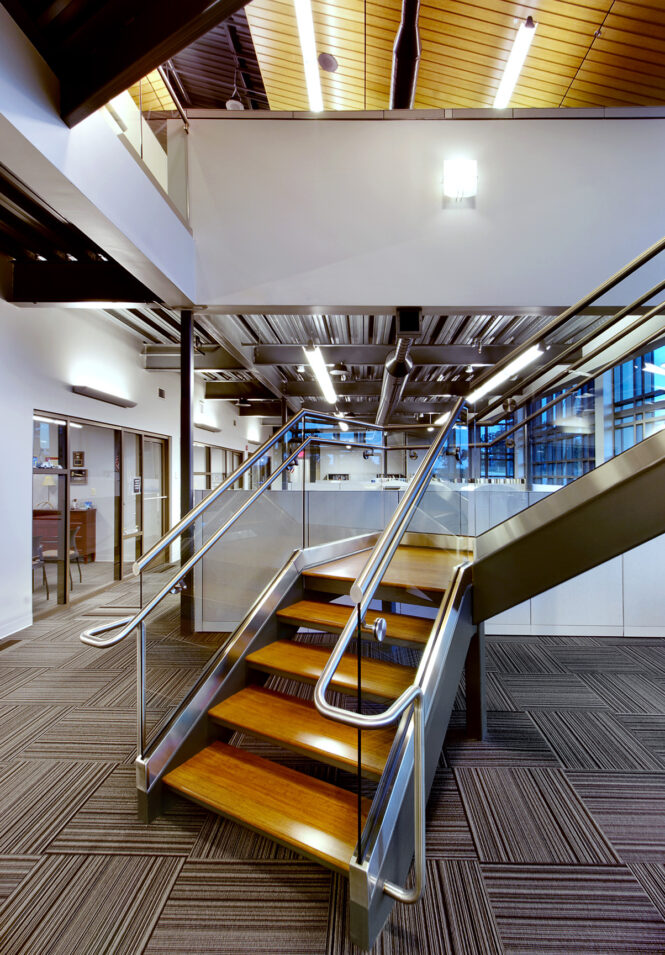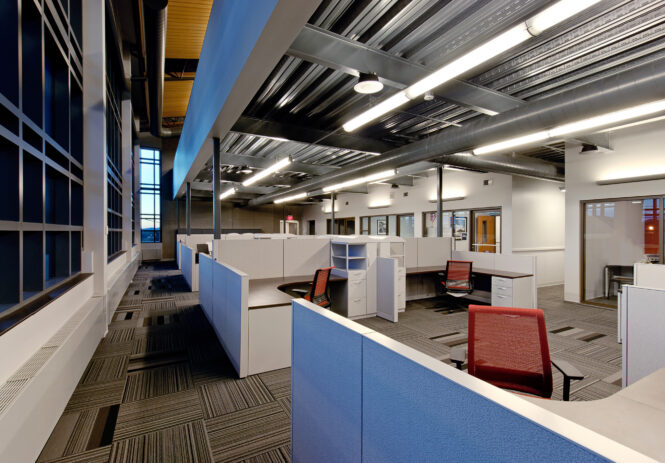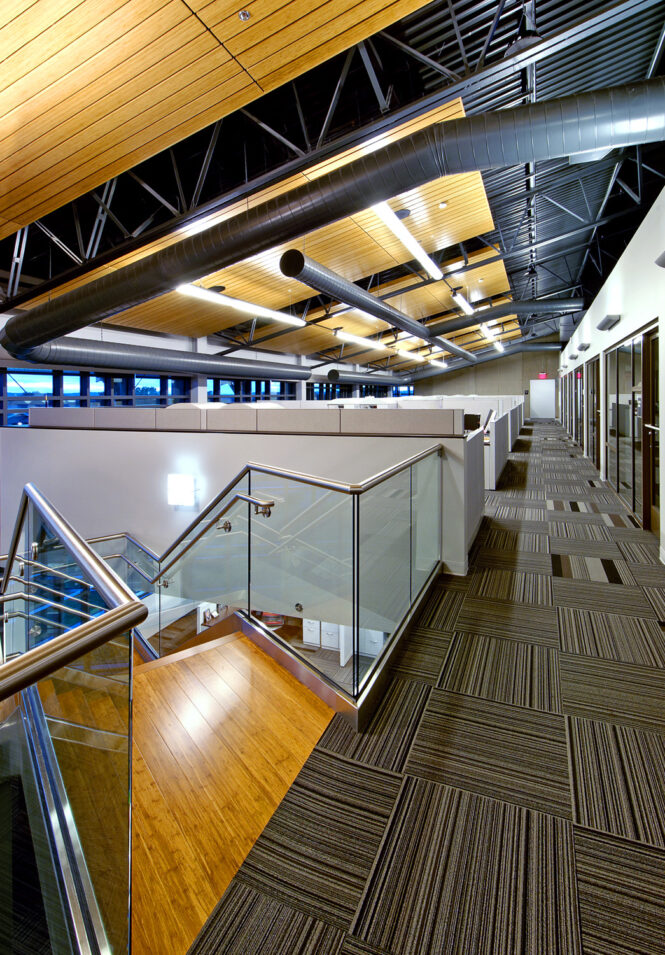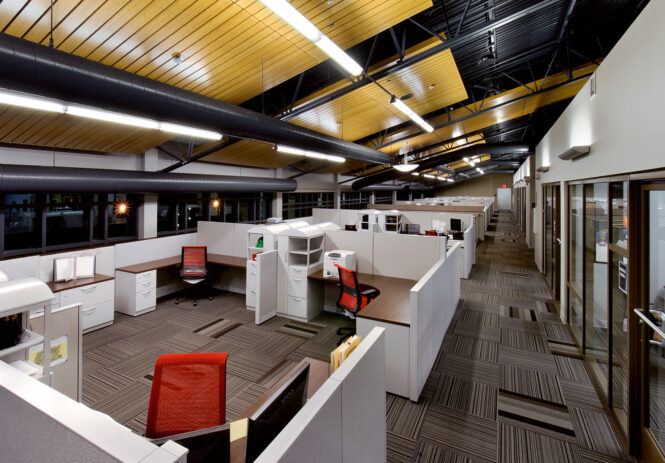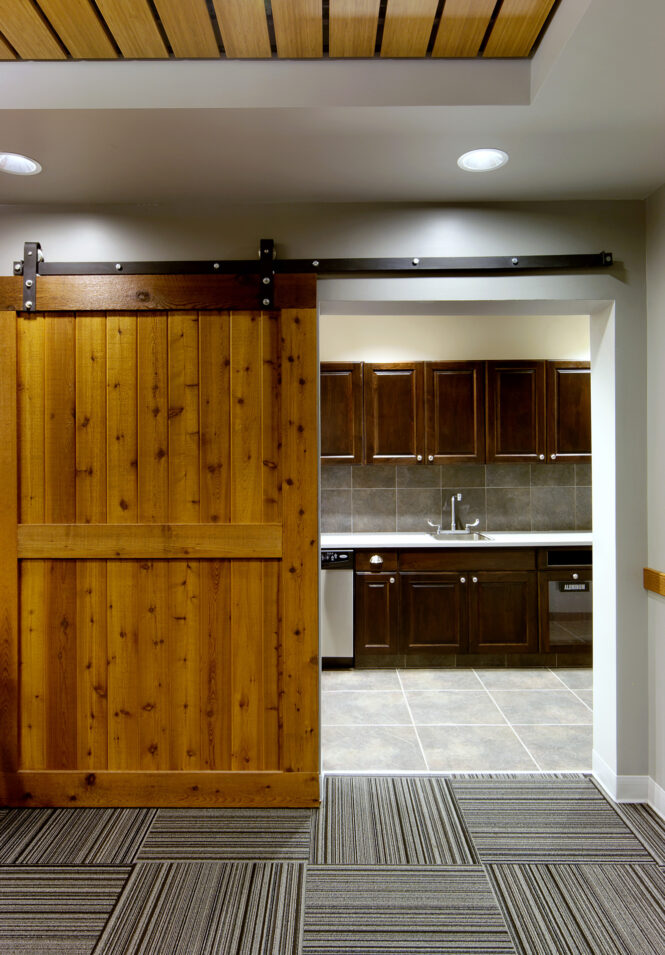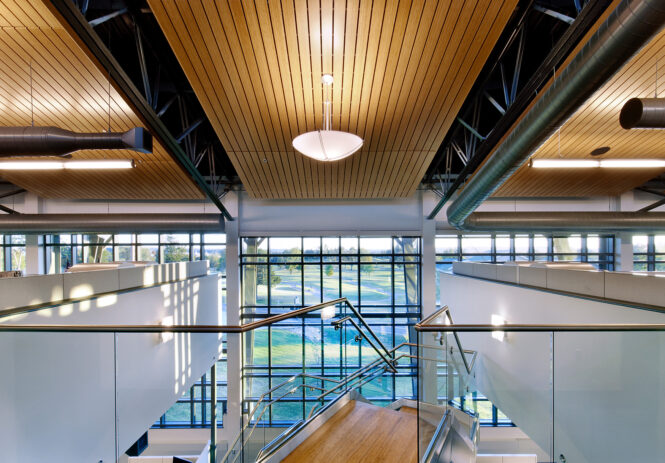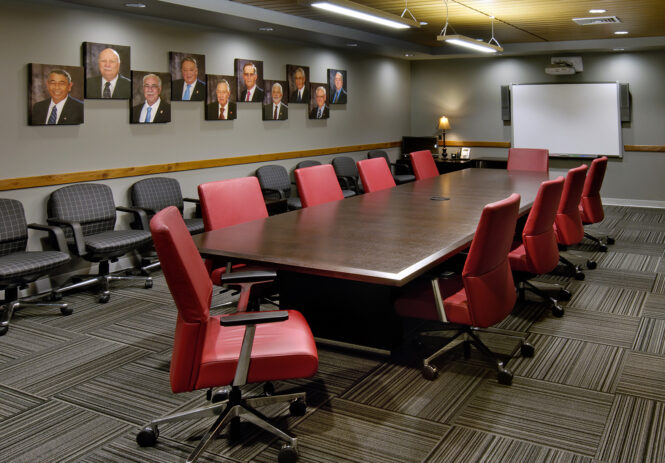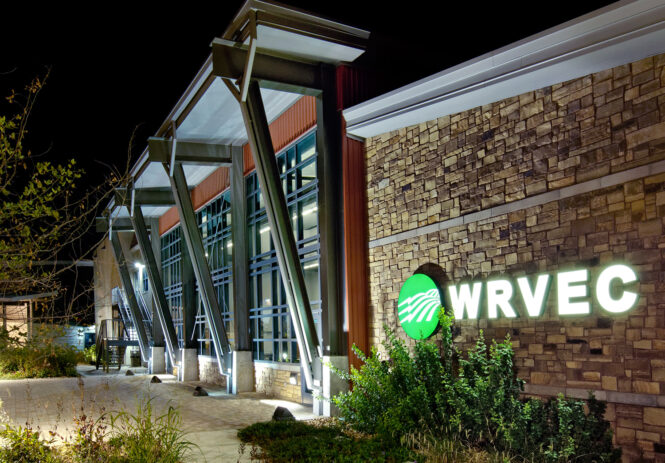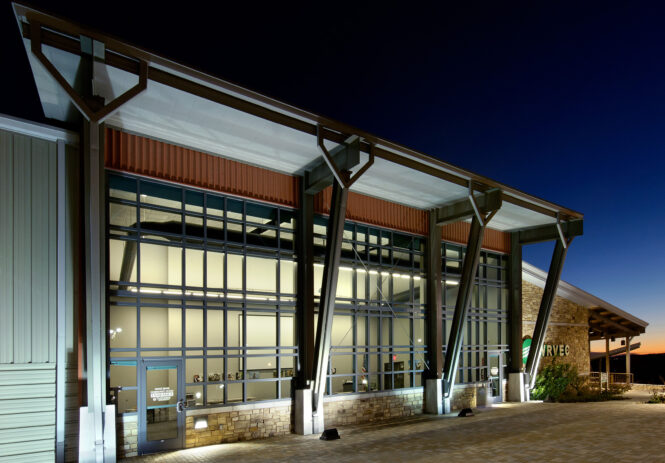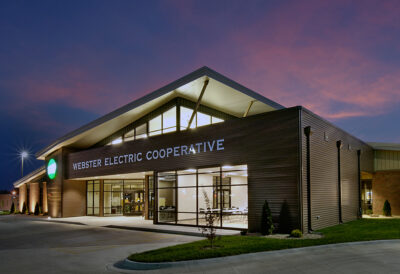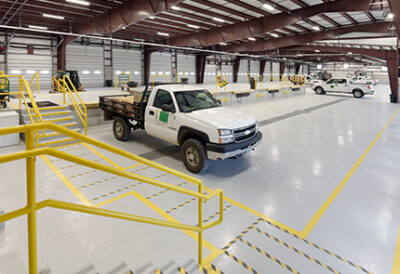White River Valley Electric Cooperative
Our relationship with White River Valley Electric Cooperative began with the renovation and additions to their Corporate Headquarters. The 54,000 square foot Corporate Office building, Central Dispatch, and 12 Bay Service Line Garage was designed to LEED Gold standards, although it has not been certified. The new headquarters also includes two FEMA 361 tornado safe rooms / tornado shelters (including a 3,150 sf two story Emergency / Operations Center and the 4,600 sf Community Safe Room) that will protect the control systems, staff and visitors from an F5 tornado. The facility also includes a large Community Room and an Energy Demonstration Area. Phase I of the facility included the Corporate Office space, Community Room, the FEMA 361 Emergency Operations / Command Center and Basement shelter. Phase II involved demolition of small portions of the existing facility. Phase III incorporated the construction of 12-16 new Garage Bays for the line trucks, as well as a facility for the linemen. Phase IV wrapped up site work and demolition of the remaining existing structure.
The phased design that allowed the existing facility to stay fully functional during the 2 year construction period. WRVEC was focused on providing staff with productive working environment as well as increased energy efficiency. The new facility uses 1/3 the energy of the old building.
Highlights of the new facility include:
- Overall the building is designed so that the overhangs block out the solar heat gain of the summer sun (which reduces the cooling loads in summer) while allowing the winter sun to shine in (which helps reduce the heating load in the winter).
- The orientation of the building was set to minimize the east and west exposure as it is more difficult to minimize the solar heat gain. Therefore the east and west sides of the buildings have minimal windows and the concrete stair towers are used to further block the effects of the sun on the office.
- Building occupants in 90% of regularly occupied spaces are provided a direct connection between their indoor space and the outdoors through introduction of daylight and views to the exterior. This increases productivity while allowing for lower levels of artificial light levels therefore reducing the lighting costs in the building
- Occupancy sensors are utilized throughout the building so when spaces are not being utilized, the lights will shut off.
- Daylight sensors are also used so that during the sunny days, the lights may not turn on at all or only have 1 lamp turned on. Then at night or on cloudy days, more lamps will automatically illuminate.
- The electric boiler will run normal conditions, but the propane boiler will start when high loads are required or the building is running under generator power. This reduces peak demand and lowers energy costs.
- Low flow sinks and toilets were used to create a 40% reduction in water use which reduces the burden on the water supply as well as the wastewater systems.
- An estimated 20% of the materials were extracted and manufactured within 500 miles of the site, thereby supporting the use of indigenous resources and reducing the environmental impact of long transportation. This also helps provide support to local manufacturing.
- An extensive amount of rock was excavated during construction of the building. All of the rock was crushed on site and reused which saved money and eliminated the impact of hundreds of dump trucks transporting rock.
- Material from the existing building was donated to Habitat for Humanity’s ReStore and the building was stripped of any reusable material or product prior to demolition. Brick, block, and concrete from the existing building was ground on site and used as fill for the new parking lot.
- Low VOC Adhesives, Paints, Carpet were used to reduce the quantity of indoor air contaminants that are odorous, irritating and harmful to the comfort and well-being of the installers and the building occupants
*Design & Project Management by Brad Erwin & Jessica Struckhoff prior to Paragon Architecture in cooperation with Williams Construction & BKD-Creative. Construction Administration by Paragon Architecture.


